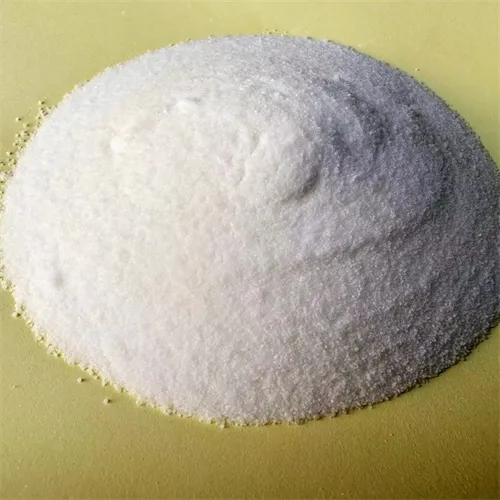Warning: Undefined array key "title" in /home/www/wwwroot/HTML/www.exportstart.com/wp-content/themes/1198/header.php on line 6
Warning: Undefined array key "file" in /home/www/wwwroot/HTML/www.exportstart.com/wp-content/themes/1198/header.php on line 7
Warning: Undefined array key "title" in /home/www/wwwroot/HTML/www.exportstart.com/wp-content/themes/1198/header.php on line 7
Warning: Undefined array key "title" in /home/www/wwwroot/HTML/www.exportstart.com/wp-content/themes/1198/header.php on line 7
- Afrikaans
- Albanian
- Amharic
- Arabic
- Armenian
- Azerbaijani
- Basque
- Belarusian
- Bengali
- Bosnian
- Bulgarian
- Catalan
- Cebuano
- China
- China (Taiwan)
- Corsican
- Croatian
- Czech
- Danish
- Dutch
- English
- Esperanto
- Estonian
- Finnish
- French
- Frisian
- Galician
- Georgian
- German
- Greek
- Gujarati
- Haitian Creole
- hausa
- hawaiian
- Hebrew
- Hindi
- Miao
- Hungarian
- Icelandic
- igbo
- Indonesian
- irish
- Italian
- Japanese
- Javanese
- Kannada
- kazakh
- Khmer
- Rwandese
- Korean
- Kurdish
- Kyrgyz
- Lao
- Latin
- Latvian
- Lithuanian
- Luxembourgish
- Macedonian
- Malgashi
- Malay
- Malayalam
- Maltese
- Maori
- Marathi
- Mongolian
- Myanmar
- Nepali
- Norwegian
- Norwegian
- Occitan
- Pashto
- Persian
- Polish
- Portuguese
- Punjabi
- Romanian
- Russian
- Samoan
- Scottish Gaelic
- Serbian
- Sesotho
- Shona
- Sindhi
- Sinhala
- Slovak
- Slovenian
- Somali
- Spanish
- Sundanese
- Swahili
- Swedish
- Tagalog
- Tajik
- Tamil
- Tatar
- Telugu
- Thai
- Turkish
- Turkmen
- Ukrainian
- Urdu
- Uighur
- Uzbek
- Vietnamese
- Welsh
- Bantu
- Yiddish
- Yoruba
- Zulu
Dec . 24, 2024 19:01 Back to list
Effective Methods for Mixing and Dissolving Xanthan Gum in Recipes
Dissolving Xanthan Gum Techniques and Considerations
Xanthan gum is a widely used food additive and thickening agent derived from the fermentation of glucose or sucrose by the bacterium Xanthomonas campestris. Its unique properties make it a popular choice in various industries, including food, cosmetics, and pharmaceuticals. However, effectively dissolving xanthan gum can be challenging due to its tendency to clump when introduced into liquids. This article will explore the techniques and considerations necessary for dissolving xanthan gum successfully.
Understanding Xanthan Gum
Before diving into dissolving techniques, it's essential to understand what xanthan gum is and why it behaves the way it does. Xanthan gum is a polysaccharide that forms a gel-like substance when mixed with water. Its thickening properties are attributed to its molecular structure, which allows it to trap water and create viscosity. However, when xanthan gum is added directly to a liquid, it can form lumps, preventing it from dissolving evenly.
Techniques for Dissolving Xanthan Gum
1. Use of Dry Blending One of the most effective methods to prevent clumping is to blend xanthan gum with other dry ingredients before adding it to the liquid. By combining the xanthan gum with sugar, salt, or other dry powders, the particles can be evenly distributed, minimizing the risk of clumping when introduced to moisture.
2. Gradual Hydration Introducing xanthan gum gradually into a liquid is another effective technique. Instead of dumping all the xanthan gum into the liquid at once, sprinkle it in slowly while continuously stirring or using an immersion blender. This gradual process allows the xanthan particles to hydrate evenly and prevents the formation of lumps.
3. Use of Cold Water Dissolving xanthan gum in cold water can yield better results than using hot water. Hot water can sometimes cause xanthan gum to swell too quickly, leading to clumping. Mixing it with cold or room-temperature water allows for a smoother, more controlled hydration process.
4. Blending with Oil In recipes where xanthan gum is used as a thickening agent for sauces or dressings, blending it with oil before adding it to a liquid can be beneficial. The xanthan gum can easily disperse in the oil, and once introduced to the aqueous phase, it will hydrate without clumping.
dissolving xanthan gum

5. Using a High-Shear Mixer For industrial applications or large batches, high-shear mixers can be effective in breaking apart xanthan gum clumps and achieving a uniform solution. These specialized mixers rapidly blend the gum into the liquid, ensuring consistent texture.
Considerations When Using Xanthan Gum
While xanthan gum offers numerous benefits, there are considerations to keep in mind
- Concentration The amount of xanthan gum used in a recipe can significantly impact the texture of the final product. Typically, concentrations of 0.5% to 1% are effective in achieving a desirable thickness. Excessive amounts can lead to an overly viscous or gummy consistency.
- pH Sensitivity Xanthan gum's thickening ability can be influenced by the pH of the solution. It generally performs well at neutral pH levels but may behave differently in acidic or alkaline environments. This is particularly relevant in food applications where pH can vary significantly.
- Temperature Stability Although xanthan gum is stable across a wide temperature range, extreme conditions during processing or storage may affect its functionality. It is essential to consider the thermal stability of xanthan gum when incorporating it into recipes.
Conclusion
Dissolving xanthan gum effectively requires understanding its unique properties and employing suitable techniques. By blending it with dry ingredients, gradually hydrating it, and using the right mixing equipment, one can achieve a smooth and consistent solution. Furthermore, being mindful of concentration, pH, and temperature conditions will help in utilizing xanthan gum to its full potential. With these strategies, chefs, food manufacturers, and home cooks alike can harness the remarkable thickening and stabilizing properties of xanthan gum in their culinary creations.
Latest news
-
Certifications for Vegetarian and Xanthan Gum Vegetarian
NewsJun.17,2025
-
Sustainability Trends Reshaping the SLES N70 Market
NewsJun.17,2025
-
Propylene Glycol Use in Vaccines: Balancing Function and Perception
NewsJun.17,2025
-
Petroleum Jelly in Skincare: Balancing Benefits and Backlash
NewsJun.17,2025
-
Energy Price Volatility and Ripple Effect on Caprolactam Markets
NewsJun.17,2025
-
Spectroscopic Techniques for Adipic Acid Molecular Weight
NewsJun.17,2025

